https://www.youtube.com/watch?v=ywae7J4gD9c
How to Solve a Rubik's Cube - Part 6 - Top Corners
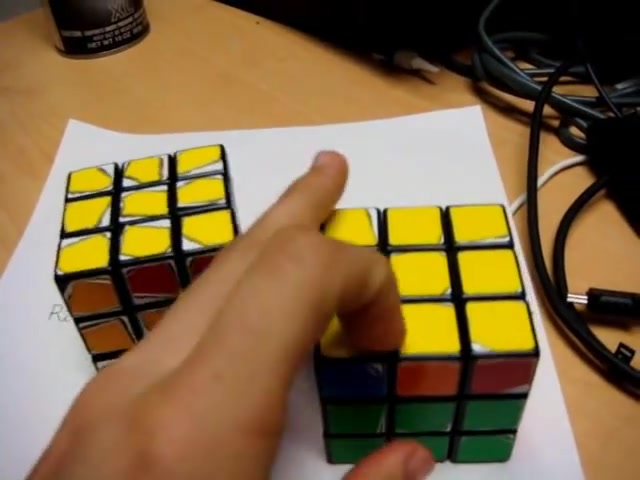
All right , this is step six of how to solve a Rubik's cube .
What you should have at this point is a top yellow face which is completed and is one solid color .
And you should also have two bottom layers which are also complete .
This is the second to last step .
So there's only one step after this .
So we're almost there .
Um What this step is going to do is it's going to reposition these four top corner pieces so that they're in the correct orientation .
And the algorithm which we're going to use is right counterclockwise , front , clockwise , right counterclockwise back 180 right clockwise , front , counter clockwise , right , counterclockwise back 180 right 180 .
And it's a relatively longer algorithm than previous steps .
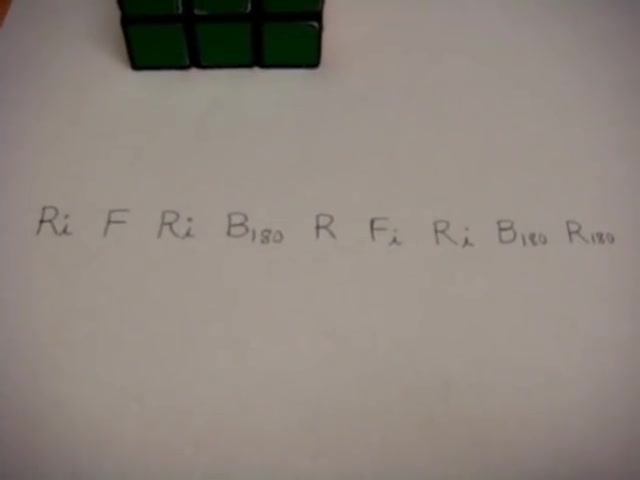
So it might be a good idea to write it down or to just pause and possibly rewind the video to go back and watch closely as I go through the steps on the actual cubes .
OK .
So in order to actually perform the algorithm , what we need to do is assign a right , a front and a back um face because those are the three faces which are used in the algorithm .
So what you want to first do is you want to look around the cube on the top layer here , you wanna look for two adjacent corners which have the same color .
So these don't have the same color .
This one is blue and this one's red , you don't want to pay attention to this top layer edge piece because that has nothing to do with this algorithm .
So if we look around these two are also different , it's red and orange and these two are also different .
If you look at these two though they are the same .
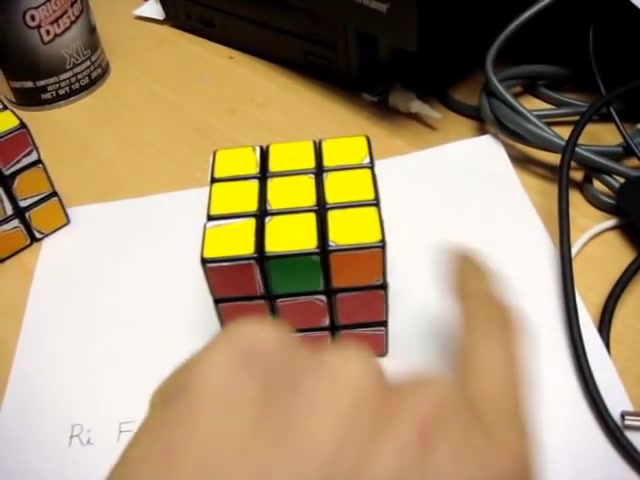
So when you find two adjacent corner pieces which have the same color , those corner pieces designate this face as the back face .
So this would be the back face , this would be the front face and this would be the right face in this case .
Now , if you're looking at your cube and you don't find two adjacent corner pieces which have the same color .
Well , this cube also , if you look around , it also doesn't have two adjacent corner pieces which have the same color .
So in that case , you can designate any one of these side faces as the front or the back face or the right face , it does not matter .
So let's go through the steps and try the algorithm out .
Let's do it first on the cube that does not have two adjacent corner pieces which have the same color .
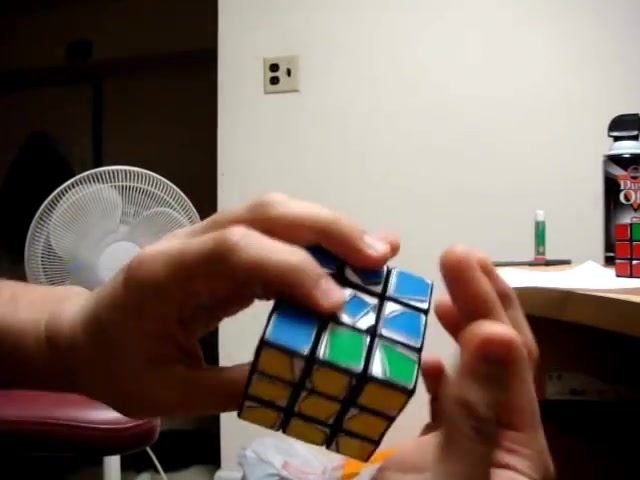
OK .
So if we perform that move , so it doesn't matter which side you designate as the back or the front .
So let's just designate this as the front and this as the back .
So if we do that move , which is right , counter clockwise , front , clockwise , right , counter clockwise , back , 180 degrees , right clockwise , front , counter clockwise , right , counter clockwise , back 180 degrees and right 180 degrees .
What you'll then notice if you turn the cube around is that there are now two adjacent corner pieces which have the same color .
In this case , they're orange .
OK .
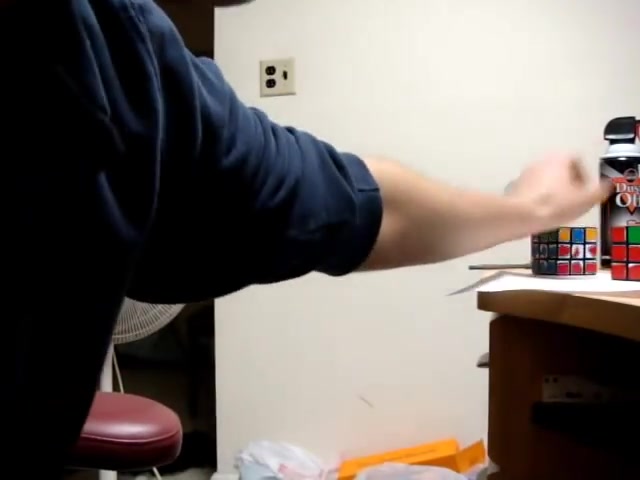
So if we take the other cube now and we look at these two adjacent corner pieces which have the same color .
These are going to be designated as the back face .
Now , as I said before , so if I turn this around , this would be the front face then because that's the back face and this is the right face .
So if we perform that move again , right , counter clockwise , front , clockwise , right , counter clockwise , back face , 180 degrees , right face clockwise , front face , counterclockwise , right face , counter clockwise , back face 100 and 80 degrees and right face 100 and 80 degrees .
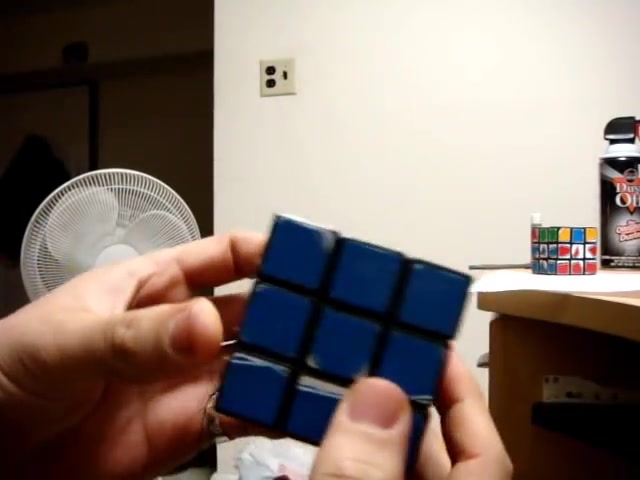
Now , if you look at the cube , you can see that one side is actually totally finished .
This side is now in the proper orientation as far as the corners are concerned .
And so are these two sides ?
Now , it doesn't always happen that you have a complete side .
Um After you finish this move , this might actually have a different edge piece here .
So all four sides might have what looks like this face or this face .
So if you perform it with the other cube , right face , counterclockwise , front , face clockwise , right face , counter clockwise , back face , 180 right face clockwise , front face , counterclockwise , right face , counterclockwise , back face 180 and right phase 180 .
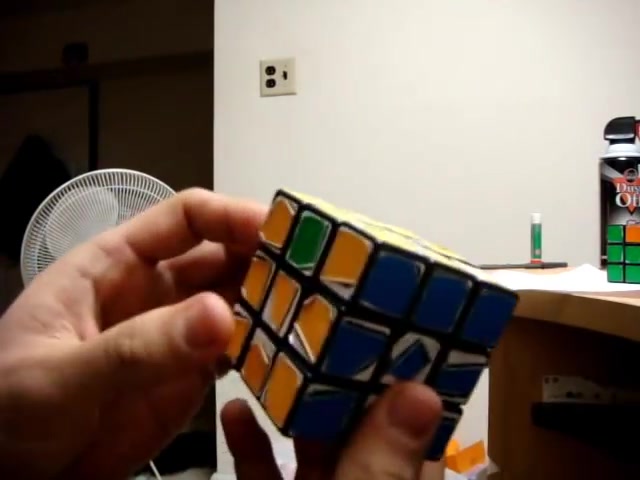
And we look around , we also have the same thing .
So we have a complete side and we also have three sides which are not finished .
OK ?
So once you have something that looks like this or even if you have a different edge piece in this position , you're ready to move on to the final step .
Are you looking for a way to reach a wider audience and get more views on your videos?
Our innovative video to text transcribing service can help you do just that.
We provide accurate transcriptions of your videos along with visual content that will help you attract new viewers and keep them engaged. Plus, our data analytics and ad campaign tools can help you monetize your content and maximize your revenue.
Let's partner up and take your video content to the next level!
Contact us today to learn more.